Best Puzzle Toys: Quick Picks
- Classic Kong [Best Basic Toy] A great basic challenge toy that requires dogs to work a bit harder for dinner as they lick inside the Kong and dislodge what’s inside.
- Brick Toy by Nina Ottosson [Best Level 2 Challenge] A super fun puzzle toy that requires dogs to nudge, dislodge, and flip various compartments to find all the treats hidden inside!
- Outward Hound Fun Feeder [Best For Dinnertime] This puzzle toy is mostly all about encouraging your dog to slow down his eating. It’s a very easy challenge and great for a first attempt at a dog puzzle toy!
- Snuffle Mat [Best For Sniffing Dogs] If you have a dog that loves to sniff (in particular dogs with a hunting or tracking background) they’ll love digging through these fabric folds for goodies!
Owning a high-energy dog or puppy can be exhausting at times, and obtaining puzzle toys for dogs give you an opportunity to take a break while ensuring your dog remains happy and active.
Both dogs and humans love brain stimulation – being challenged is a canine’s delight!
The best dog puzzle toys often involve making your dog work a little for a tasty reward.
Many dogs actually prefer to work for their food rather than eating out of a boring old bowl. Searching for food alleviates boredom, and sniffing activates your dog’s brain’s pleasure center!
9 Best Dog Puzzle Toys For Keeping Your Pooch Amused
We’re detailing the very best interactive dog toy puzzles that are sure to keep Fido entertained! Some toys require owner supervision (and even participation), while others can be left with your dog unattended.
1. Classic Kong
This is a sponsored placement, in which an advertiser pays a fee to be featured in this article. Learn more
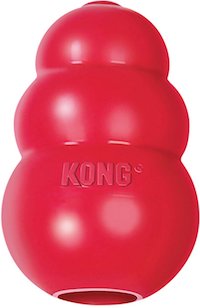
Classic KONG
The original must-have puzzle toy
This versatile puzzle toy is a favorite of animal shelters everywhere. It can be played with, chomped on, filled with food, and frozen!
About: The ubiquitous Classic Kong is a great beginner puzzle toy to ease your dog into using their problem-solving skills. Start by filling it to the brim with a handful of dry kibble and let them figure out how to get it all.
As they become more adept at emptying the toy, increase the difficulty by using soggy kibble, peanut butter, or frozen treats. You can use the Kong to handle mealtime or to help a puppy adjust to crate training.
Plus, if you’re looking for an ultra-tough indestructible puzzle toy that you can leave your dog with home alone, the Classic Kong is an excellent choice (although you should always supervise your dog engaging with a toy several times before trusting him alone with it). The Classic Kong is available in several different sizes and strengths to meet your individual dog’s needs.
- Vet Recommended. The Kong ball is a highly rated, vet-approved toy for keeping your dog happy and engaged.
- Great For Dinner & Play. The Kong can be used both as a feeding system or as a simple fun, bouncy toy.
- Ultra Durable & Chew-Proof. Kongs are known for their tough, chew-friendly rubber, so even owners of rough dogs need not fear the Kong.
Pros
Owners can’t say enough good things about Kong – they are one of the most well-known, reputable dog toy brands on the market. You can rest assured that you’re getting a high-quality toy for your dog.
Cons
Despite Kong’s amazing rubber, some dogs still manage to chew through (what are their teeth made of, dragon glass?).
2. Nina Ottosson Puzzle Toy For Dogs
This is a sponsored placement, in which an advertiser pays a fee to be featured in this article. Learn more
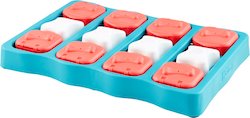
Nina Ottosson Brick Toy
Brain-boosting find-the-treat puzzle toy
Pups must flip the covers off various compartments to find the morsels. One of the more popular Nina Ottosson puzzle toys!
About: This “Brick” style puzzle dog toy from Nina Ottosson allows you to hide treats under different “bricks” for your dog to sniff out and slide away to reveal the treat.
- Good For Beginners. This is a great beginner puzzle toy for dogs new to the concept, with an easy to medium difficulty level.
- Bond & Interact With Your Dog. This puzzle toy works best with dog owner interaction, allowing you and your canine to play together and bond!
- Sturdy And Non-Toxic. This durable interactive toy is tough, non-toxic, and can be washed easily in a dishwasher.
Pros
Owners love that they can use this puzzle toy to play and engage with their dog.
Cons
Some owners note that their dog was able to solve this toy too easily, suggesting that it’s best for dogs new to puzzle toys or for young puppies. If you have a smarty pants dog, you may want to upgrade to a tougher toy.
3. Trixie Activity Board
This is a sponsored placement, in which an advertiser pays a fee to be featured in this article. Learn more
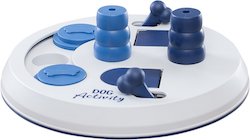
Trixie Activity Board
Intermediate-level puzzle toy that requires canine thinking
Compartments must be moved and lifted in different ways for your dog to find the treats!
About: The Trixie Dog Activity Board is a puzzle toy for dogs that’s ideal for dogs who need a bit more of a challenge.
- Use Mouth & Nose. Requires your dog to use their mouths and paws/noses to lift and shift pieces.
- Requires critical thinking. Toy relies on different techniques for opening indentations.
- Non-slip Rubber Feet. Non-slip feet allow your dog to push and nudge the toy without it toppling over or sliding around.
- Washable. Machine washable and easy to clean.
- May Require Some Teaching. Requires some initial training to teach your dog how to access the treats.
Pros
Owners love that this toy is more challenging for smart pantys pups who have mastered other puzzle toys
Cons
Owners note that is it very important to teach your dog and show them how to “win” at the game, otherwise they will simply get upset and frustrated.
4. Outward Hound Fun Feeder Slo Bowl
This is a sponsored placement, in which an advertiser pays a fee to be featured in this article. Learn more
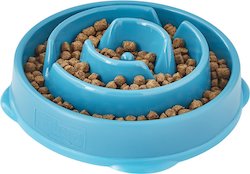
Outward Hound Slo Bowl
Ridged dog bowl that slows down speedy eaters
This slow-eater dog bowl forces your dog to use his tongue to grab kibble rather than gulp it down all at once.
About: The Outward Hound Fun Feeder is another basic toy that stimulates your dog while also slowing down how quickly they eat at mealtime.
If your dog struggles with gulping down kibble, slow feed dog bowls are a great way to stop your dog’s frantic gobbling while adding a bit of brain-boosting challenge to your dog’s dinner session.
- Your Dog’s Dinner. Holds up to 4 cups of dry kibble, making it the perfect dinner time toy.
- Helps Dogs Eat Slower. This toy is designed to help gobbling canines slow down, which in turn improves digestion and prevent bloating, choking, and other issues.
- Food Safe Plastic. Made with food-safe ABS plastic that is BPA, PVC & phthalate free.
Pros
This toy is perfect for dogs who devour their dinners – owners note the Outward Hound Fun Feeder makes dogs work a bit harder for their meal, in some cases saving owners several trips to the vet for bloat and digestion problems.
Cons
This dog puzzle toy can’t really be used for situations outside of meal time.
5. Nina Ottosson’s Dog Tornado Toy
This is a sponsored placement, in which an advertiser pays a fee to be featured in this article. Learn more
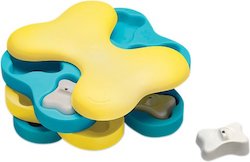
Dog Tornado Puzzle
A moderate-level spinning puzzle toy
This Level 2 Ottosson toy requires your dog to move 12 spinning compartments in order to access goodies!
About: Another Nina Ottosson toy called the Dog Tornado lets dogs swivel different stacked compartments to access hidden treats.
- Can Leave Dogs Unsupervised. Unlike many others, this dog toy doesn’t require constant supervision.
- Training Needed. Requires some training interaction at first to teach your pup how to use it.
Pros
Owners of witty canines love having a toy that can finally match their doggy’s Einstein mind.
Cons
This dog toy is more difficult and designed for dogs with big brains. If your dog is new to puzzle toys or not especially clever, they may simple find this toy too frustrating and get annoyed.
6. Kong Stuff-A-Ball Toy
About: The next level up from the basic Kong, the KONG Stuff-a-Ball Toy offers a bigger challenge for motivated dogs.
This is a sponsored placement, in which an advertiser pays a fee to be featured in this article. Learn more
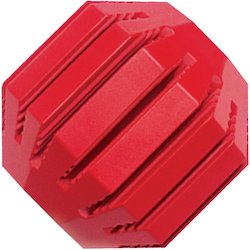
Kong Stuff-A-Ball
Teeth-cleaning treat dispenser
Made of the same ultra-tough rubber at the standard Kong, this ball includes ridges to get your dog’s teeth clean!
- Multiple Settings. This toy provides more treat dispensing options with external crevices and an internal dispenser.
- Chew-Friendly. Made from super durable, puncture-resistant, non-toxic rubber that Kong toys are known for.
- Cleans Your Dog’s Teeth. Toy’s ridges helps clean your dog’s teeth and massage gums.
- Easy To Clean. This Kong toy is dishwasher safe and durable.
Pros
Owners appreciate how this toy cleans their dogs’ teeth while keeping them engaged. It also has a fun bounce to it!
Cons
A few owners with extra rough and tough chewing dogs found that this toy couldn’t hold up against super aggressive chompers.
7. Kong Wobbler
This is a sponsored placement, in which an advertiser pays a fee to be featured in this article. Learn more
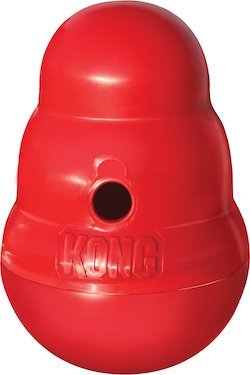
Kong Wobbler
Wobbling feeder that dispenses treats
This feeder requires your dog to knock, nose, and paw at the weighted dispenser in order for food to fall out.
About: The Kong Wobbler toy wobbles and rolls across the floor in an unpredictable pattern, mixing activity and games with mealtime.
- No Supervision Needed. This toy is pretty simple and has very few parts. You should be a-ok to leave your pup unattended while playing with this toy.
- Easy for You and Your Pup. Simply unscrew the top of this toy, fill it with your dog’s breakfast or dinner, and let your dog go to town! Most dogs catch onto the batting and nosing required to get their food very quickly.
Pros
This toy is simple to use and easy to clean. Owners of smart dogs love how this toy is as much about physical skill as anything else — it doesn’t get old the way some other toys do. Even the smartest dogs can’t totally outwit this toy!
Cons
This toy can be a bit noisy as it rolls around on your floor. Keep this in mind if your downstairs neighbors work the night shift!
8. Snuffle Mat
This is a sponsored placement, in which an advertiser pays a fee to be featured in this article. Learn more
About: The Snuffle Mat is an absolute must-have for nervous or anxious dogs. Your dog will get the soothing benefits of using his nose and his mind to find his dinner. Think of it as an 80s shag carpet full of dog treats.
- Relies Heavily on Scent. This toy is more of a scent game than a tough-to-solve puzzle. As we said above, sniffing is a great way to calm down nervous dogs.
- Easy for Dogs. What’s more natural to a dog than using his nose to find food? This toy keeps dogs busy for a while, but doesn’t require any training on your end to make it work.
Pros
Owners of anxious dogs find this toy is really useful for soothing nervous dogs. Some owners even found it helped during thunderstorms or fireworks
Cons
This toy can get a bit dirty and should only be used with kibble. After a time, the fleece on this toy might get stretched out and might need to be replaced.
9. Household Recycling
About: Get creative with egg cartons, paper bags, cereal boxes, and other recycling around your home. We already have a whole article about DIY Puzzle Toys, but this is still an absolute favorite.
- Switch it up Every Day. When your trash turns into toys, it’s easy to give your pup something new (almost) every day. While most owners certainly can’t afford 365 different puzzle toys, it’s not that hard to make a different piece of trash into a puzzle toy every day.
- Let Your Dog Destroy Something. Many dogs, especially young ones, have a strong desire to shred things. When you pay for expensive toys (or new shoes), this is a problem. Letting your dog destroy a few cereal boxes can help make everyone happier!
Pros
It doesn’t get much cheaper than using your own trash to make toys for your dogs. You can get creative, or just close a few pieces of kibble into an egg carton and call it a day.
Cons
You generally have to clean up after your pup destroys a DIY puzzle toy. This can get old fast! You also need to be careful not to give your dog something that might hurt him if he eats it.
What’s The Best Puzzle Toy For Dogs? We Choose Kong
All the puzzle toys we detailed above are great choices for challenging your four-legged fur baby, but if you simply can’t decide where to start, we suggest going with Kong. Whether you want the simple kibble-based Kong Wobbler, the Stuff-a-Ball, or the classic Kong, Kong really has your bases covered.
I find the Kong Stuff-a-Ball to be the most “foolproof” toy of the lot, especially for dogs that are new to puzzle toys. It offers a broad range of stimulation and skill usage, and gives adult dogs and teething puppies an outlet for chewing.
For the level of occupation it provides, combined with the lack of training input on your part, the Kong Stuff-a-Ball is an ideal beginner or intermediate puzzle toy.
Also, considering its low price range, it’s not a big loss if your dog decides they don’t like it. It is a quality budget puzzle toy that suits a range of needs, making it the best option for new puzzle toy buyers.
K9 of Mine’s on-staff trainer, Kayla, travels the world with her border collie, Barley. When she packed Barley’s bag for the big trip, she chose to bring the Kong Wobbler instead of a food bowl or any other puzzle toy.
It’s easy to clean, indestructible, and there are no parts for her to lose while traveling. While Barley still misses his Snuffle Mat and a few other puzzle toys, the Kong Wobbler’s wacky motion keeps him entertained every single day!
Benefits of Puzzle Toys For Dogs
Why do owners choose puzzle toys to occupy your dog over chewy treats or self-amusement toys (like textured squeaky toys)?
- Keep Your Dog Occupied For Long Periods. For one thing, pup puzzle toys can keep your dog occupied for a longer amount of time than even the squeakiest stuffed squirrel. A high-energy dog isn’t just in need of a reward (e.g., the squeaky sound, or the taste of the treat): they need to work for it! For dogs, the promise of food rewards can keep your dog engaged for huge stretches of time.
- Release Happy Hormones. Sniffing for food releases dopamine into your dog’s brain. This hormone makes your dog feel relaxed and happy. Puzzle toys that are scent-based are extra good at making your dog feel better, but any puzzle toy that engages your dog’s “seeking pathway” of the brain will do the trick!
- Prevent Destructive Behavior. Helping a dog focus their energy on an involving puzzle toy helps prevent them from turning to destructive or undesirable behaviors such as chewing furniture, nuisance barking, or begging.
- Combat Boredom & Loneliness. Dogs need mental enrichment, just like people do. Especially during times when your dog is alone for long stretches, it’s important that they can occupy themselves and not get bored.
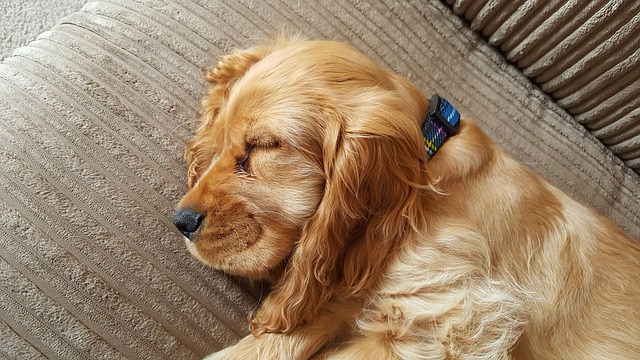
- Provide Mental Stimulation. Like humans, dogs want to keep busy and can become neurotic or depressed when they don’t have enough opportunities to stimulate themselves. Imagine being stuck at the doctor’s waiting room with no magazine and a dead mobile phone – you’d be bored stiff (and dogs don’t even have smartphones – only those old brick Nokias, poor things).
- Exhaust Pent Up Energy. Regular exercise is a great first step for getting rid of physical energy (a doggy treadmill does wonders as well), but an energetic, intelligent dog can be harder to satisfy. Whether you want to build your dog’s mental acuity, help them release some energy, or present a challenge, puzzle toys are an appealing option.
Puzzle Rewards + Your Dog’s Diet: Don’t Let Fido Get Fat!
Most dog puzzle toys involve food as the reward for “solving” the puzzle. This is highly motivating for dogs, especially for canines who are especially food-obsessed.
While food rewards can work wonders, and dog treats can make training a breeze, remember that it’s easy to overfeed your four-legged pal. It’s also much easier to overfeed your pooch than you’d think (just as it’s pretty easy to overfeed yourself when Dominos is running a 2 for 1 large pizza special).
Prevent your dog from gaining too much weight:
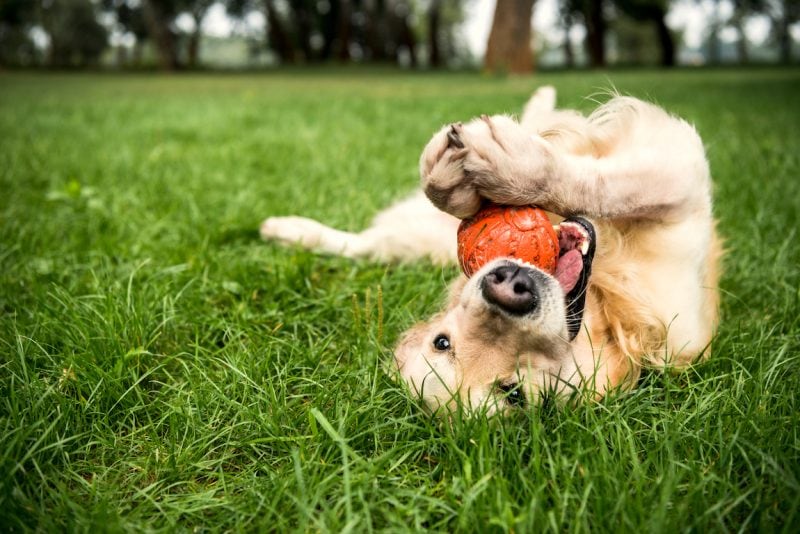
- Use Visual Aids. Not sure if your dog is on the chunkier side or not? There are many visual aids available to help you monitor your dog’s weight, including on the back of most dog food bags.
Your dog should have a visible waist, and their abdomen should tuck upwards when viewed from the side. You should also be able to feel your dog’s ribs beneath a light layer of fat.
- Keep Breed In Mind. It’s also worth noting that appropriate weight can vary between breeds. I used to always think that my Doberman/Lab mix Benzy was too skinny since I could see his ribs, and was constantly trying to fatten him up. After discussing his weight with our vet, I learned that Benzy was at a perfect weight – his skinny, sleek look was just part of his genetic makeup.
- Measure Out Puzzle Toy Treats. To avoid having your pooch develop a potbelly when incorporating puzzle toys, make sure to count or measure out the treats or kibble the toy uses as a reward.
If your dog chows down the allotted amount in a flash, it’s time to switch to a more challenging toy – don’t just fill up the toy, or you’ll end up with a chubby canine.
- Puzzle Time Can Be Dinner Time Too! You can also use puzzle toys as a method for your dog to “earn” their dinner. Put their usual meal amount of kibble into the toy and let them work for it. This is also a great solution for dogs that eat too fast or beg after they finish their meal. K9 of Mine’s on-staff dog trainer, Kayla Fratt, is a huge advocate for tossing your dog’s food bowl. Why just use a puzzle toy for treats, when you can feed a whole meal?
Many owners also choose to put their dog’s meals into a Kong ball and then freeze it, which also prevents dogs from gobbling their kibble in an instant.
While chunky pups can be cute, it’s important to keep your furry pal trim to ensure that they stay active, healthy, and feel great! Overweight pets have many of the same health concerns as overweight humans.
Want to see a canine puzzle toy in action? Check out Shiba Inu Saki play with Nina Ottosson’s Brick Puzzle toy (which we discuss in detail below).
When Dog Puzzle Toys Won’t Cut It
Dog puzzle toys can help canines that are destructive or anxious put their energy into something constructive and beneficial. However, you’ll want to avoid using dog puzzle toys as a bandaid solution for your dog’s vast and varied canine needs.
When considering incorporating puzzle toys into your pup’s playtime, keep these tips in mind.
- No Substitute for Socializing. Puzzle toys are great, but they are never a full substitute for social interaction. Dogs are extremely social creatures, and your dog still needs to interact with humans and other dogs on a regular basis to optimize their mental health and behavior.
Binging alone through 5 seasons of Arrested Development on Netflix is fun, but it’s not the same as a long conversation over coffee with a friend (or in a dog’s case, a good butt-sniffing at the park).
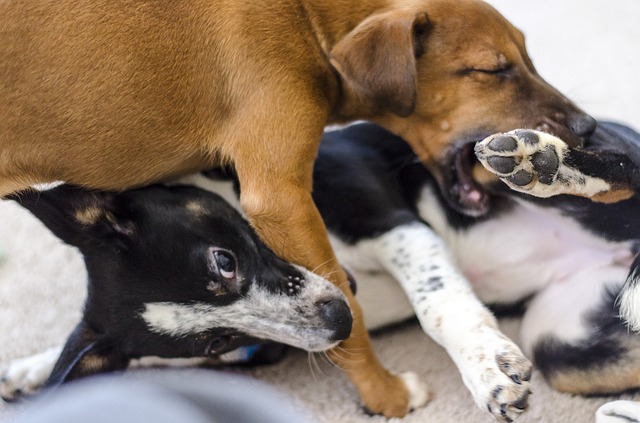
- Dog’s Still Need Exercise. Puzzle toys are also not a full substitute for exercise. Some dogs just need to run until they drop, and no amount of Trivial Pursuit or Rubix’s Cube action will change that.
- Not An Easy Answer To Separation Anxiety. Dogs with serious separation anxiety may not be appeased by puzzle toys. While boredom can often be quelled by puzzle toys, separation anxiety can have some deep-rooted causes that shouldn’t go unaddressed. Owners should consider professional training or thorough research on curing separation anxiety DIY style.
- Frustration vs Aggression. Another important issue is the difference between doggie frustration (due to too much energy) and aggression. Puzzle toys won’t “fix” a dog with food aggression or other types of social misbehaviors. These types of more serious issues often require professional assistance. While we have some resources for working with aggressive dogs and dogs that resource guard, you will do best getting help from a pro.
Look for a trainer with a certification from the International Association of Animal Behavior Consultants (IAABC) or the Certification Council for Professional Dog Trainers (CCPDT), which are widely accredited organizations within the US.
Dog Puzzle Toys FAQ
What puzzle toys are most challenging for smart dogs?
Look for puzzle toys with adjustable difficulty levels that allow owners to increase the challenge to make the puzzle tougher! Examples of puzzle toys that have this option are the CleverPet and the Trixie Dog Chess.
What can you put in a puzzle toy?
Puzzle toys can be filled with treats (the stinkier, the better) or even just your dog’s regular kibble.
What are the best indestructible puzzle toys?
If you’re looking for a tough, indestructible puzzle toy, anything by Kong is usually a safe bet.
The Classic Kong and Kong Wobbler are both great choices since they are made of whole, single pieces instead of several smaller, removable pieces, which is common with many other puzzle toys.
What are your favorite dog puzzle toys that you use with your dog? Any top picks we missed? Share your thoughts in the comments!
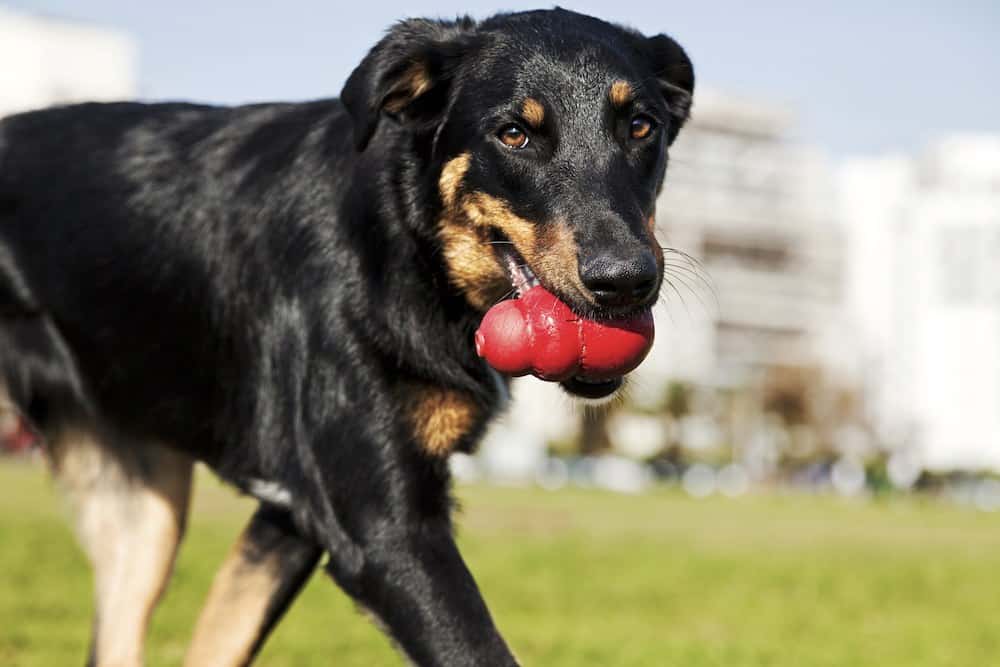




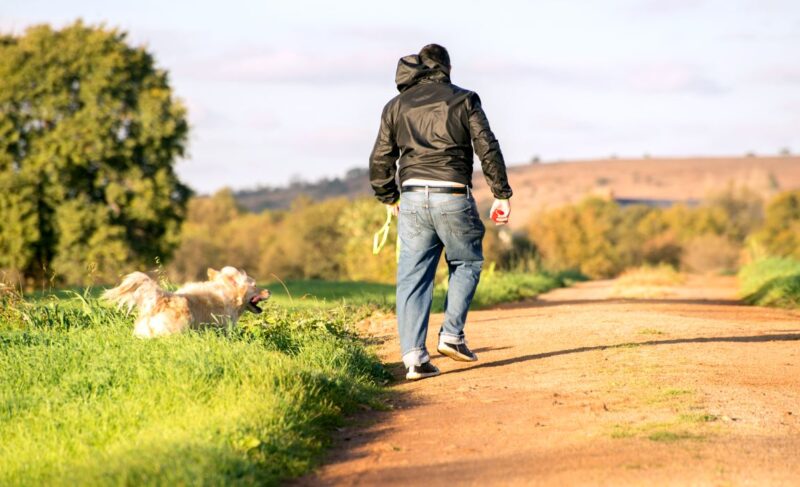
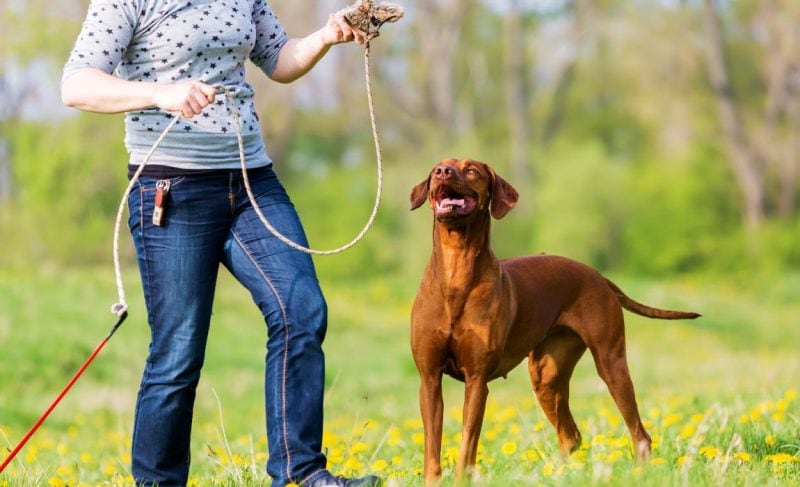


Leave a Comment